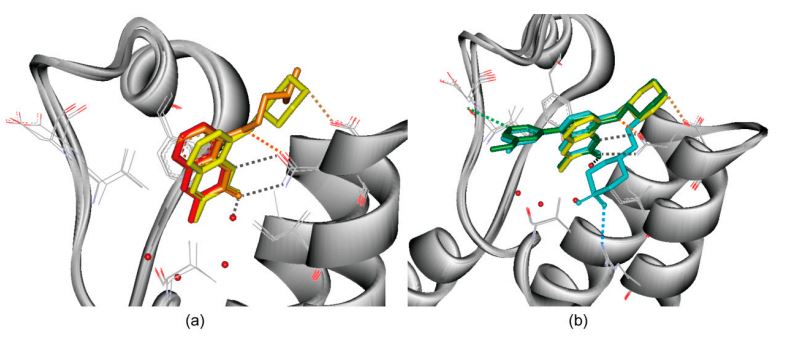Fragment-to-Lead
Fragment-based screening approaches are widely applied to identify low molecular weight fragments that bind to the target biomolecule. Since these fragments are usually bound weakly to targets and cannot exhibit obvious inhibitory effect on the activity of the targets, further chemical modification of these fragment hits is required to advance into desired lead compounds.
 Fig.1 Hit-to-lead evolution of ATAD2 bromodomain inhibitors in the fragment-based screening. (Ma, R.; et al. 2016)
Fig.1 Hit-to-lead evolution of ATAD2 bromodomain inhibitors in the fragment-based screening. (Ma, R.; et al. 2016)Our Strategies of Fragment-to-Lead Services
BOC Sciences provides three frequently utilized strategies, they are fragment growing, fragment merging, and fragment linking. We perform these solutions to improve the biological activity and drug-like properties of fragments and develop them into leads which bind to the target with higher affinities.
Fragment growing
- Our groups can grow fragments into compounds with higher molecular weights and more complex structures with the combination of the useful information obtained by biophysical assays and structural knowledge.
- We can deliver lead compounds that enable to produce more interactions at the active site of the target protein and enhance the strong binding affinity with the target.
- Our medicinal chemists are capable of performing druggability prediction and structure-activity relationships investigation in our computer-aided drug design platforms.
Fragment merging
- We have abilities in identifying fragments accurately with an overlapped binding site and developing potent lead compounds by merging common chemical features of two or more fragments.
- We can also determine the binding modes of fragments and carry out fragment merging of the identified hits through the application of X-ray crystallography, NMR spectroscopy and docking methods.
- Our groups are able to deliver more drug-like molecules by replacing non-drug like core structures in the hits with suitable scaffolds based on our reliable target-ligand structural data.
Fragment linking
- Our teams can identify suitable chemical linker or space with no negative effect on the activity of the fragment.
- We help you to have better understanding of molecular interactions between the ligand and fragment with our extensive structural information.
- In order to improve the binding affinities, we have applied the calculated binding free energy.
- We also carry out analysis of the the potential ligand binding sites to identify hits accurately.
Our Advantages
- Our groups are experienced in determining which part of the ligand is critical for binding with deep understanding of the binding mode and various biophysical experiments.
- We are confident in offering high-quality approaches for fragment-to-lead step and supporting upstream fragment screening.
Reference
- Ma, R.; et al. Process of Fragment-Based Lead Discovery—A Perspective from NMR. Molecules. 2016, 21(7): 854.
※ It should be noted that our service is only used for research.

One-stop
Drug Discovery Services
- Experienced and qualified scientists functioning as project managers or study director
- Independent quality unit assuring regulatory compliance
- Methods validated per ICH GLP/GMP guidelines
- Rigorous sample tracking and handling procedures to prevent mistakes
- Controlled laboratory environment to prevent a whole new level of success
Online Inquiry

